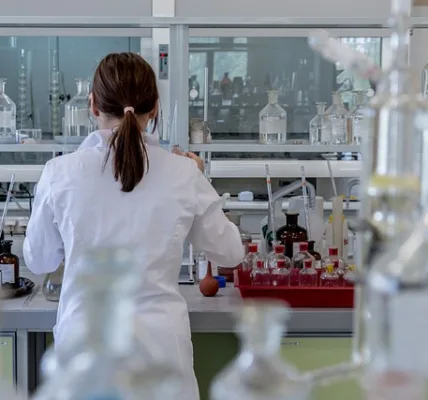Biotechnology has come a long way since the first successful recombinant DNA experiment was performed by Herbert Boyer and Stanley Cohen in 1973. Today, the field is one of the most exciting and rapidly growing sectors in science, with a myriad of applications in medicine, agriculture, and industry. Biotechnology involves the manipulation of living organisms or their components to produce useful products or processes. It encompasses a broad range of techniques and technologies, including genetic engineering, synthetic biology, and biomanufacturing.
The potential of biotechnology is immense. For example, genetic engineering has already led to the production of insulin and other drugs, which have revolutionized the treatment of diabetes and other diseases. Biotechnology has also enabled the development of genetically modified crops, which can resist pests and diseases and improve yields, helping to feed a growing global population. In the future, biotechnology may even offer solutions to some of the biggest challenges facing humanity, such as climate change and energy security.
However, biotechnology is not without its challenges and controversies. Genetic engineering and other biotech techniques raise ethical and safety concerns, and there is always the risk of unintended consequences. There is also the issue of access and affordability, as many biotech products and therapies are expensive and difficult to produce at scale.
As biotechnology continues to advance, it is becoming increasingly clear that it will play a central role in the development of the next generation of technology: the metaverse.
Introduction to the world of Metaverse
The metaverse is a term that has been used to describe a fully immersive and interconnected virtual world. It is a vision of the future where we can enter a digital realm that is indistinguishable from reality. This concept has been popularized in science fiction, but it is rapidly becoming a reality. Virtual reality and augmented reality technologies are already being used in gaming, education, and other fields, and experts predict that the metaverse will be a major part of our lives within the next decade.
Biotechnology has the potential to revolutionize the metaverse in a number of ways. One of the most exciting possibilities is the development of virtual biology, which involves creating digital organisms that can interact with the environment and with other digital life forms. These organisms could be designed to have unique properties and capabilities that are not found in nature, allowing for new forms of creativity and exploration.
For example, virtual organisms could be created to perform specific tasks, such as cleaning up virtual pollution or generating virtual energy. They could also be used to explore virtual environments that are too dangerous or inaccessible for humans, such as deep space or the ocean floor. By combining biotechnology with virtual reality, we could create a new field of exploration and discovery that is both safe and limitless.
Biotechnology could also be used to enhance our virtual experiences. For example, virtual reality headsets could be designed to stimulate the senses in new and exciting ways, allowing us to experience virtual environments as if they were real. This could be achieved through the use of biotechnology-based sensors and actuators that mimic the way our biological systems work.
Another exciting possibility is the development of biotech-based avatars, which could be used to create personalized digital representations of ourselves that are more realistic and interactive than current avatars. By integrating biotech sensors and actuators into these avatars, we could create a new level of immersion and interactivity that has never been possible before.
Of course, these advances in biotechnology and the metaverse raise a number of ethical and safety concerns. For example, there is the risk of creating virtual organisms that could escape into the real world and cause harm, or of creating virtual environments that could be used for nefarious purposes. There is also the issue of access and affordability, as many of these technologies are expensive and may not be accessible to all.
However, these concerns should not detract from the immense potential.






















